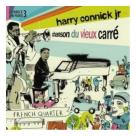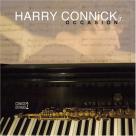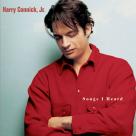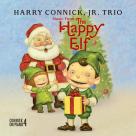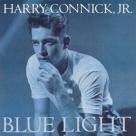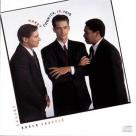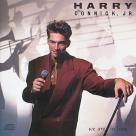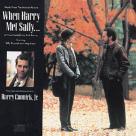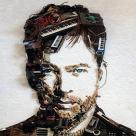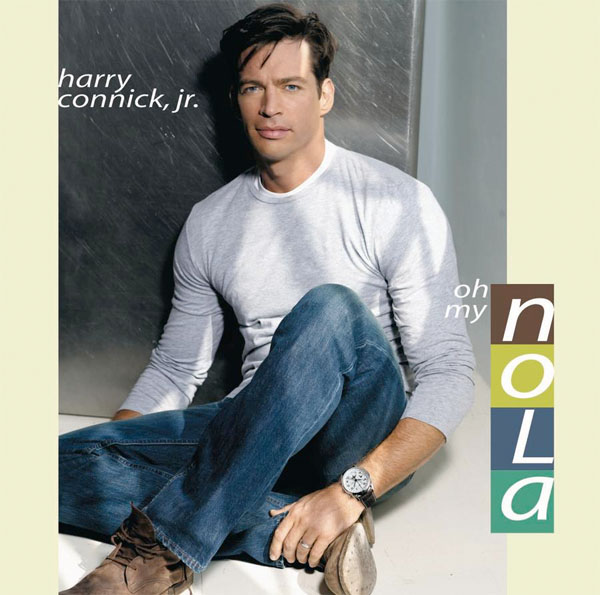It has been a year of triumph for Harry Connick, Jr., with his universally heralded appearance in the celebrated revival of "The Pajama Game." Even with his focus on Broadway, however, thoughts of his home town have never been far from Harry's mind.
“New Orleans is a city of paradox. Sin, salvation, sex, sanctification, so intertwined yet so separate. The blurred lines from the dark blue of Mardi Gras night to the periwinkle of Ash Wednesday morning” is the way Harry summarizes the gritty and grandiose, soulful and magical Crescent City, where the musical culture is second to none. “Jazz, gospel, brass band, rhythm and blues, country, funk aren’t all the styles played in New Orleans,” he emphasizes. “But they’re the ones I wanted to play around with.” And “play around with” them he does, to brilliant effect, on Oh, My Nola.
Oh, My Nola was recorded in June, days after Harry had completed his historic run in "The Pajama Game" that is documented in the original cast recording that comprises half of the two-disc set Connick on Broadway, Volume 1. With the assistance of his great Big Band, plus the added input of a few special guests, he has created an unprecedented musical cornucopia of songs inspired by and associated with the Crescent City.
Several of the titles will bring New Orleans instantly to mind, although Harry and his associates have inevitably found ways to provide a new perspective on these old favorites.
“I put a New Orleans groove on `Jambalaya,’ instead of a traditional Cajun or Zydeco feeling,” he says of the old Hank Williams hit. “Then we move into an entirely new tempo for an entirely new groove – big-band swing.”
“Careless Love,” an even older warhorse, was arranged and performed spontaneously, at the end of the album’s final session, with a trio of Harry on vocals and piano, Jonathan Dubose on acoustic guitar and Arthur Latin playing only bass drum and tambourine; while “Working in a Coal Mine” gained new life through Latin’s imaginative overdubbing.
“Arthur worked his magic with all of his percussion toys,” Harry reports, “and each part he played told a different story of each different worker in that mine.”
For “Somethin’ You Got,” Harry allowed several of the horn players in his band to take a breather and came up with what he calls “a traditional, old-school arrangement for four horns and rhythm section.”
Personal tributes also add to the heartfelt aura of Oh, My Nola. These include “Won’t You Come Home, Bill Bailey,” the favorite song of Harry's Uncle Ray (whose photo graces the cover of Harry's album She,) and “Lazy Bones,” one of the songs that Harry's mother would sing to him when he was a child. Several of Harry's musical idols also receive their props on “Let Them Talk,” with an arrangement based on the live solo piano version by the great James Booker; “Hello, Dolly,” identified worldwide with Louis Armstrong; and “Elijah Rock,” one of Harry's favorite recordings by New Orleans gospel giant Raymond Myles.
The program also features four new originals that reflect the paradoxical nature of the city Harry celebrates. “We Make a Lot of Love” is all about romance, and a song that Harry began work on while recording his popular collection of love ballads, Only You. The title track, “a brand new song about a very old city,” makes room for one of New Orleans’ master musicians, banjo player Bill Huntington, as well as three of its young lions – trumpeter Leon “Kid Chocolate” Brown, trombonist Troy “Trombone Shorty” Andrews and pianist Jonathan Batiste.
“Jonathan’s 19 years old and attending Julliard, and Shorty and Kid brought him along to the session,” Harry says. “He sounded so great that I decided he had to play piano on this track. I had never had another piano player on one of my recordings, but he was amazing. It brought a tear to my eye to see Shorty, Kid and Jonathan playing with Arthur Latin, [trombonist] Lucien Barbarin and me, and to also have Bill Huntington, who Lu and I had played with when we were very young.”
Harry's other two original compositions are among the most moving of his career. “Do That Thing” is both a celebration of New Orleans culture (“The title means whatever you want it to mean,” Harry insists; “You’ve just got to know how to do it”) and a tribute to the city’s late musical greats, many of whom are mentioned specifically by name. More powerful still is “All These People,” inspired by the suffering Harry witnessed when he visited New Orleans in the days immediately following Hurricane Katrina.
“The song is all about the people who were left stranded at the Convention Center, with the verses describing what I saw as I was taken through by a kind fellow I had met on the street earlier that day named Darryl.” The track features Harry in duet with the great gospel singer Kim Burrell.
“I wanted somehow to represent the voices of the brave people who were abandoned there, and Kim was the perfect choice. She asked me to write an added verse, because she wanted to represent the two dead bodies that Darryl showed me when I first arrived at the Convention Center; and her improvised line `Come see about me’ at the end is my favorite part of the performance, because that’s all those folks wanted, someone to come and see about them.”
“All These People” was the first single to be released from the album, and Harry's royalties from its sale, as well as a portion of his royalties from the sales of both Oh, My Nola and Chanson du Vieux Carre (an album of instrumental jazz by Harry's Big Band that the Marsalis Music label is also releasing in October) will benefit the New Orleans Habitat Musicians’ Village. This project, conceived by Harry and his longtime friend and colleague Branford Marsalis, will consist of single-family homes and elder-friendly duplexes as well as the Ellis Marsalis Center for Music, named for the modern jazz pioneer and patriarch of the Marsalis clan who counts Harry among his legion of successful music students. Harry and Branford Marsalis serve as honorary chairs of Habitat for Humanity’s hurricane relief effort, Operation Home Delivery, which began dedicating completed houses and delivery keys to needy families shortly before Oh, My Nola was recorded.
For all of the work that remains to be done, there is a basic spirit of optimism and celebration that permeates Oh, My Nola, and that is best captured in Harry's version of “Yes We Can.”
“Allen Toussaint was prophetic on this one,” he says of the song’s legendary composer. “`Yes We Can’ perfectly fits the bill of a post-Katrina New Orleans. This should be the theme song of our great city.” It also summarizes the manner in which Harry views life – with positive spirit, a focus on solutions rather than casting blame, and a humanity that knows no boundaries. It is this same spirit that makes Oh, My Nola such an honest and affirmative experience.
